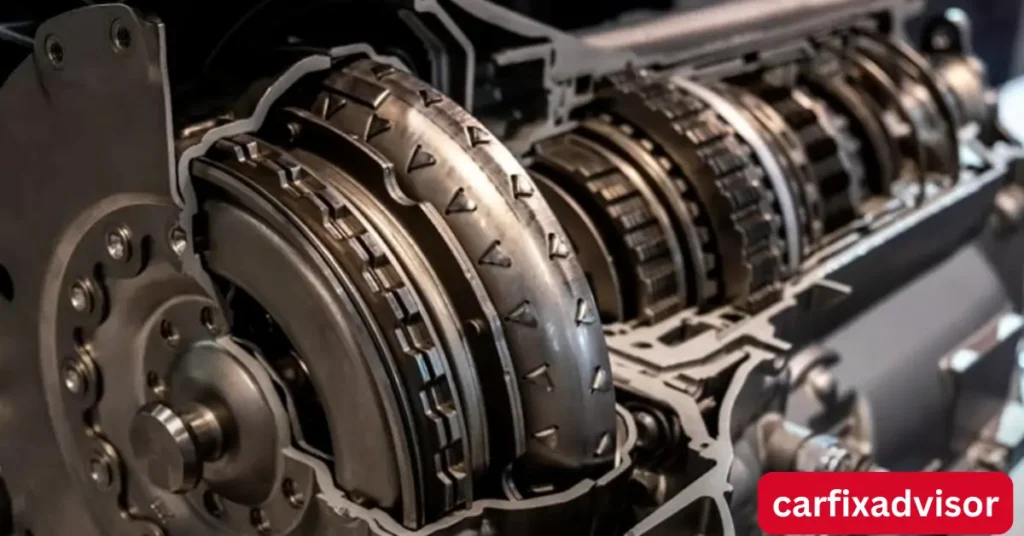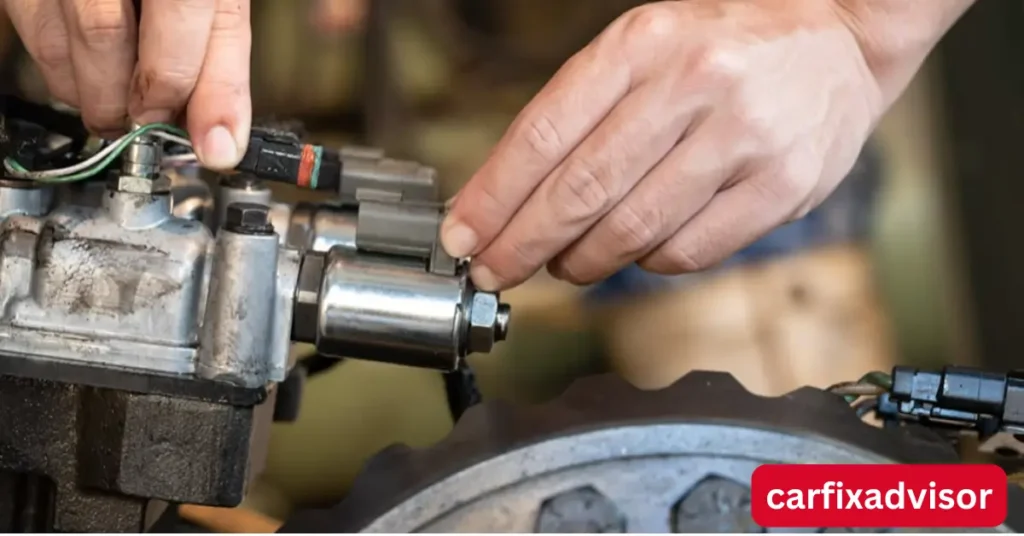The transmission governor is an often overlooked component of a car’s transmission system, but it plays a crucial role in ensuring that your vehicle shifts smoothly. If the transmission governor is malfunctioning or damaged, it can lead to a host of issues that affect the performance of your car. Unfortunately, this problem can go unnoticed until it has escalated, causing serious damage to your transmission if not addressed in time.
In this article, we will explore the symptoms of a bad transmission governor, what the governor does, and how to address the issue. Whether you’re a car enthusiast, a DIY mechanic, or a new car owner, this guide will help you understand the importance of this component and how to spot potential problems early.
What Is a Transmission Governor?
Before diving into the symptoms, it’s important to understand what a transmission governor is and how it functions in your vehicle. A transmission governor is a mechanical device found in automatic transmissions, particularly in older vehicles with hydraulic systems. It helps regulate the pressure and shift points within the transmission, ensuring that the gears shift smoothly based on the vehicle’s speed.
Purpose of the Transmission Governor:
-
Controls Pressure: The governor monitors the speed of the vehicle and adjusts the hydraulic pressure to control the timing of gear shifts.
-
Ensures Smooth Shifting: It helps ensure that your vehicle shifts gears smoothly by coordinating the timing of the transmission’s hydraulic system.
-
Prevents Engine Strain: By controlling the shifting points, the governor prevents the engine from overworking, which can reduce engine strain and improve fuel efficiency.
In newer vehicles, electronic control units (ECUs) have largely replaced the mechanical governor, but understanding its function is still relevant for those with older cars or specific transmission systems.
Common Symptoms of a Bad Transmission Governor
When the transmission governor begins to fail, it can result in various symptoms that affect how your car drives. If left unaddressed, these issues can cause permanent damage to the transmission, which is costly to repair. Below are the key symptoms to watch for:
1. Erratic or Delayed Shifting
One of the most noticeable symptoms of a bad transmission governor is erratic or delayed shifting. This means that your car may have trouble shifting into the correct gear at the right time, either taking too long to shift or shifting unexpectedly.
-
Delayed Shifts: You might experience a noticeable delay before the car changes gears, especially when accelerating.
-
Harsh Shifting: Shifting between gears might feel abrupt or rough, as if the car is struggling to change gears smoothly.
This happens because the governor is responsible for controlling the hydraulic pressure in the transmission. When it malfunctions, it can cause improper timing for the gear shifts.
2. Transmission Slipping
Transmission slipping is another common symptom of a bad governor. In this case, the car’s transmission may unexpectedly change gears or fail to stay in the correct gear. You might notice that the engine revs higher than usual without a corresponding increase in speed.
-
What You’ll Feel: You may feel a sudden jolt, a drop in engine power, or the car will unexpectedly shift to a different gear, all of which are signs that the governor is failing to regulate the transmission correctly.
Transmission slipping can also be caused by low fluid levels or worn-out parts, so it’s important to rule out those issues first.
3. Overheating Transmission
A faulty transmission governor can lead to an overheating transmission. This happens because improper gear shifting causes friction in the system, and the added strain can cause the transmission fluid to heat up faster than it should.
-
Signs of Overheating: You might notice the temperature gauge in your vehicle rising, or the transmission may emit a burning smell. Over time, this can cause significant damage to the transmission.
Overheating is a serious issue that should be addressed immediately, as it can lead to total transmission failure if ignored for too long.
4. Inability to Shift Into Certain Gears
If your car has trouble shifting into specific gears, it could be a sign of a malfunctioning governor. For instance, you might find that your car can shift into lower gears but struggles with higher gears or vice versa.
-
What’s Happening: The governor controls the pressure that determines when and how the car shifts gears. A damaged governor can result in the transmission getting stuck in a particular gear or failing to engage higher or lower gears.
This symptom should not be ignored, as it can indicate a serious problem with the transmission’s hydraulic system.
5. Unusual Sounds from the Transmission
If you hear grinding, whining, or buzzing sounds coming from the transmission, this could indicate an issue with the governor. These noises occur when the transmission is struggling to shift properly or is working under excessive strain.
-
Grinding or Whining: When the governor is faulty, it may cause irregular shifts that lead to mechanical wear and tear. This wear can result in unpleasant sounds as parts inside the transmission rub against each other improperly.
If the sounds are persistent or get worse over time, it’s a good idea to have the transmission inspected.
6. Check Engine Light
In some cases, a malfunctioning governor can trigger the vehicle’s check engine light. This is particularly common in newer vehicles with electronic transmission control, where the governor’s failure may be detected by the vehicle’s onboard diagnostic system.
-
What You Should Do: If the check engine light comes on, it’s important to have the car scanned for error codes. A mechanic can use the codes to identify whether the issue is related to the governor or another part of the transmission.
What Causes a Transmission Governor to Fail?
Understanding the causes of a bad transmission governor can help prevent issues from developing in the future. While the governor itself can wear out over time, certain factors can accelerate its failure.
Common Causes of Governor Failure:
-
Wear and Tear: Like all mechanical components, the transmission governor can simply wear out with age, especially if the vehicle has high mileage.
-
Low Transmission Fluid: Low fluid levels or dirty transmission fluid can lead to improper hydraulic pressure, which can damage the governor.
-
Contaminants in the Transmission Fluid: Dirt, debris, or metal shavings in the transmission fluid can cause the governor to malfunction.
-
Electrical Issues (in newer models): In modern vehicles, where the governor is electronically controlled, electrical faults can affect the function of the governor, causing it to behave erratically.

How to Diagnose and Fix a Faulty Transmission Governor
If you’re experiencing symptoms of a bad transmission governor, it’s important to address the issue promptly to avoid further damage to your transmission. Diagnosing and fixing the problem typically requires the expertise of a trained mechanic, but there are steps you can take to identify the issue.
1. Check the Transmission Fluid
Start by checking the transmission fluid. Low or dirty fluid can contribute to poor transmission performance and may be causing the issues you’re experiencing. If the fluid is low, top it off and see if that resolves the issue. If the fluid is dirty or has a burnt smell, consider flushing the system and replacing the fluid.
2. Look for Leaks
Transmission fluid leaks are another common cause of governor issues. Inspect the transmission for any signs of leaking fluid, as this could be the source of your problems. If you find a leak, have it repaired before proceeding with other fixes.
3. Get a Diagnostic Scan
If the symptoms persist after checking the fluid levels and fixing any leaks, it’s time to get a diagnostic scan. A professional mechanic can use a scan tool to read error codes from your car’s ECU, helping pinpoint whether the issue is with the governor or another component of the transmission.
4. Replace the Governor (If Necessary)
In cases where the governor is damaged or malfunctioning, it may need to be replaced. Depending on your car’s make and model, this could be a relatively straightforward fix or a more complex repair. The mechanic will remove the faulty governor, install a new one, and ensure the transmission is functioning properly.
Symptoms of a Bad Transmission Governor
How to Prevent Transmission Governor Failure
While some factors contributing to governor failure are inevitable, such as wear and tear, there are several preventive measures you can take to prolong the life of the governor and ensure your transmission operates smoothly. Regular maintenance and a few smart habits can go a long way in protecting your car’s transmission system.
1. Maintain Proper Fluid Levels
One of the most important aspects of keeping your transmission in good condition is maintaining proper fluid levels. Transmission fluid plays a vital role in the functioning of the transmission and the governor. Low fluid levels can cause inadequate hydraulic pressure, leading to erratic shifting and damage to the governor.
-
How to Maintain Fluid Levels: Regularly check the transmission fluid using the dipstick (if your car has one). Make sure the fluid is at the proper level, and top it off when necessary. If the fluid is dark or smells burnt, it’s time to replace it. Always use the type of fluid recommended by your vehicle’s manufacturer.
2. Change Transmission Fluid Regularly
Over time, transmission fluid can break down and become contaminated with dirt and debris. If left unchecked, this can cause the fluid to lose its effectiveness, resulting in poor transmission performance and increased wear on the governor. Regular fluid changes help prevent these issues.
-
Recommended Interval: Depending on your vehicle’s make and model, it’s generally recommended to change the transmission fluid every 30,000 to 60,000 miles. However, always consult your owner’s manual for the specific maintenance schedule.
3. Avoid Aggressive Driving
Aggressive driving, such as rapid acceleration, hard braking, and high-speed driving, can put unnecessary strain on your vehicle’s transmission system. This can lead to premature wear on components like the governor, increasing the risk of failure.
-
Smooth Driving Tips: Practice smooth acceleration and deceleration. Avoid riding the clutch or abruptly shifting gears, as this can cause excessive stress on the transmission. A calm and steady driving style will help preserve the health of the transmission.
4. Fix Fluid Leaks Promptly
As mentioned earlier, fluid leaks are one of the main contributors to transmission problems. If your vehicle is leaking transmission fluid, it can lead to low fluid levels, which in turn can damage the governor and other transmission components. It’s important to address leaks as soon as they are noticed to prevent further damage.
-
How to Spot Leaks: Look for dark red or brown spots on the ground where you park your vehicle. If you notice a decrease in fluid levels, it’s a sign that there may be a leak. Have the leak repaired promptly to avoid further transmission damage.
5. Monitor Vehicle Performance
Regularly monitor how your car is driving. Any signs of delayed shifting, unusual sounds, or slipping should be addressed immediately. Early detection of problems can prevent more severe damage to your transmission and save you from expensive repairs down the line.
-
When to Visit the Mechanic: If you notice any of the symptoms of a bad governor—such as jerky or delayed shifting, overheating, or strange noises—don’t wait for them to worsen. Schedule an appointment with a mechanic to get the issue diagnosed and resolved before it leads to a more serious problem.
When to Seek Professional Help
While some of the symptoms of a bad transmission governor can be addressed through basic maintenance or DIY repairs, in many cases, diagnosing and fixing the problem requires professional expertise. If you’re unsure about how to proceed or if you’re dealing with more complex transmission issues, it’s best to consult a qualified mechanic.
Professional Diagnosis:
A mechanic can perform a diagnostic scan to determine the exact cause of the transmission problems, including any faults with the governor. This scan can provide valuable error codes that help pinpoint the issue, allowing the mechanic to suggest the appropriate repairs.
Governor Replacement:
If your transmission governor is indeed faulty and needs replacement, a professional mechanic will ensure the new part is installed correctly and that the transmission is recalibrated for optimal performance. Attempting to replace the governor yourself without proper knowledge or tools could result in further damage.
Transmission Overhaul:
In some cases, if the governor’s failure has caused extensive damage to other parts of the transmission, a full transmission overhaul might be required. This can be a costly procedure, so early intervention is key to avoiding this scenario.
Cost of Repairing or Replacing a Faulty Transmission Governor
The cost of repairing or replacing a faulty transmission governor can vary widely depending on several factors, such as the make and model of your vehicle, labor costs in your area, and whether you opt for an OEM (Original Equipment Manufacturer) part or an aftermarket part.
Cost Breakdown:
| Repair Type | Estimated Cost | Details |
|---|---|---|
| Governor Replacement | $200 – $600 | The cost of replacing a faulty governor can range depending on whether you choose an OEM or aftermarket part, and the complexity of installation. |
| Transmission Fluid Change | $100 – $250 | Regular fluid changes can help prevent governor issues and improve overall transmission performance. |
| Labor Costs | $75 – $150 per hour | Labor charges for diagnosing and replacing the governor can vary, depending on the mechanic’s hourly rate and the time required for repairs. |
| Full Transmission Repair | $1,000 – $4,000 (or more) | If the governor failure leads to further damage, a full transmission overhaul may be necessary. This can be a costly repair. |
Additional Factors Affecting Cost:
-
Make and Model: Luxury or foreign vehicles may have higher repair costs due to specialized parts and labor.
-
Transmission Type: Manual transmissions may have different repair costs compared to automatic transmissions.
-
Mechanic’s Expertise: A mechanic with specialized knowledge of your vehicle’s transmission type can charge a premium for their services.
Conclusion: Symptoms of a Bad Transmission Governor
A bad transmission governor can cause significant issues with your vehicle’s shifting performance, leading to erratic gear changes, slipping, overheating, and even complete transmission failure if left untreated. By recognizing the symptoms early and addressing them promptly, you can save yourself from costly repairs and ensure your vehicle continues to run smoothly.
Proper maintenance, such as regular fluid checks, addressing leaks, and driving smoothly, can help prevent governor failure and prolong the life of your transmission. However, if you experience any of the symptoms of a bad transmission governor, it’s important to seek professional help to diagnose and repair the issue before it becomes a bigger problem.
Remember, keeping an eye on your vehicle’s performance and addressing minor issues before they escalate is the key to maintaining your car’s health and longevity.

